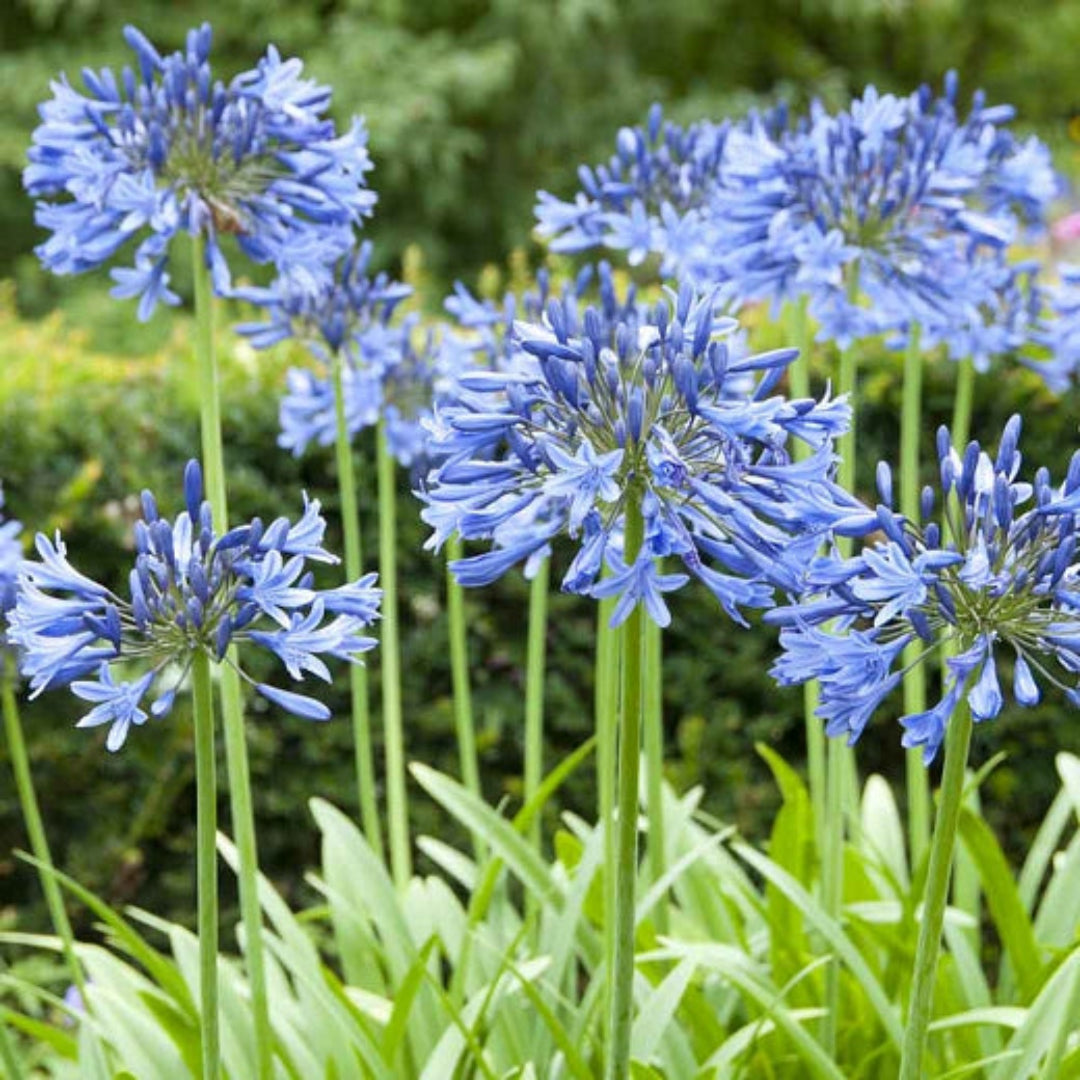Agapanthus Care Tips for Lush and Vibrant Flowers
Agapanthus Care Tips for Lush and Vibrant Flowers
Blog Article
Mastering the Art of Agapanthus Care: Essential Steps for Healthy And Balanced Development and Vivid Blossoms
In the world of horticulture, the growing of agapanthus stands as a satisfying venture for those that seek to support these stylish flowering plants. From picking the ideal selection to understanding pruning strategies, the journey in the direction of growing prospering agapanthus plants is multifaceted and holds the crucial to opening the full potential of these organic treasures.

Choosing the Right Agapanthus Variety

When choosing the appropriate Agapanthus variety for your garden, consider factors such as environment viability, blossom color, and growth practice. Furthermore, consider the climate in your region to ensure the Agapanthus selection you select can grow in your particular problems. Recognizing the growth practice of various Agapanthus ranges is essential for appropriate positioning within your garden.
Suitable Planting Problems
Taking into consideration the optimum environmental requirements is essential for successful Agapanthus cultivation. Agapanthus grows in well-draining soil with a somewhat acidic to neutral pH degree. When planting, pick a place that gets full sunshine to partial shade. In hotter climates, giving some afternoon color can prevent scorching of the leaves. Agapanthus plants are delicate to cold temperature levels and must be secured from frost throughout winter season.
To ensure healthy and balanced development and lively blooms, plant Agapanthus light bulbs at a deepness of regarding 2-4 inches and room them 8-12 inches apart. Including organic issue, such as garden compost, to the dirt can improve drainage and fertility, advertising durable origin growth. Mulching around the base of the plants assists preserve moisture and subdues weed growth. Normal watering is crucial, particularly during the expanding season, to keep the soil continually wet yet not soaked.
Watering and Feeding Tips
Keeping appropriate wetness degrees and giving crucial nutrients are crucial components in the care program for Agapanthus plants. When it comes to watering Agapanthus, it is crucial to strike a balance. These plants prefer constantly moist dirt yet are susceptible to root rot if overwatered.
Fertilizing Agapanthus is crucial for promoting healthy and balanced development and respected flowers. Use a well balanced fertilizer, such as a 10-10-10 formula, in the early spring as brand-new growth arises. Repeat this application every 6-8 weeks throughout the expanding period. Stay clear of extreme fertilization, as it can lead to lush foliage at the cost of blossoms. Always follow the supplier's instructions for appropriate dilution and application methods. By complying with these watering and feeding pointers, you can ensure your Agapanthus plants thrive and create vivid, lasting blossoms.
Trimming Methods for Agapanthus
Trimming Agapanthus plants at the ideal times and with correct techniques is important for maintaining their health and wellness and promoting ideal growth and blooming. The perfect time to trim Agapanthus is in late winter or early spring before new growth emerges.
Deadheading spent blossoms can also redirect the plant's energy into generating more flowers instead than setting seeds. If you want to accumulate seeds for propagation, leave some blossoms to dry and mature on the plant.
Remember to make use of tidy, sharp devices to make exact cuts and minimize the danger of introducing diseases. Agapanthus. Routine trimming will aid keep your Agapanthus looking healthy and balanced and cool while making certain a plentiful display of beautiful blossoms
Taking Care Of Common Pests and Conditions
After guaranteeing proper pruning methods for Agapanthus, it is important to address typical pests and illness that can impact the health and vitality of these plants. Agapanthus plants are usually durable but can still drop target to specific issues. One typical bug that influences Agapanthus is the Agapanthus gall midget. This small, orange fly lays its eggs in the vegetation, resulting in altered development and flower buds that stop our website working to open. To battle this bug, trim and damage any affected plant components and take into consideration utilizing insecticidal soap.
Additionally, Agapanthus plants can suffer from origin rot if they are grown in badly draining soil. By being watchful and taking prompt activity versus conditions and bugs, you can assist your Agapanthus plants thrive and produce lively blooms. Agapanthus.

Conclusion
To conclude, understanding the art of agapanthus treatment includes selecting the right range, providing perfect planting problems, appropriate watering and feeding, suitable trimming strategies, and dealing with typical bugs a knockout post and diseases. By complying with these important actions, you can make sure healthy and balanced growth and see this page vibrant blossoms for your agapanthus plants. Remember to routinely keep track of and preserve your plants to promote their overall health and durability.
To make sure healthy and balanced growth and vibrant blossoms, plant Agapanthus bulbs at a deepness of regarding 2-4 inches and area them 8-12 inches apart. By complying with these watering and fertilizing ideas, you can guarantee your Agapanthus plants prosper and create vibrant, resilient flowers.
One usual bug that affects Agapanthus is the Agapanthus gall midget. In addition, Agapanthus plants can suffer from root rot if they are grown in inadequately draining pipes soil. By following these necessary actions, you can make sure healthy and balanced growth and dynamic blooms for your agapanthus plants.
Report this page